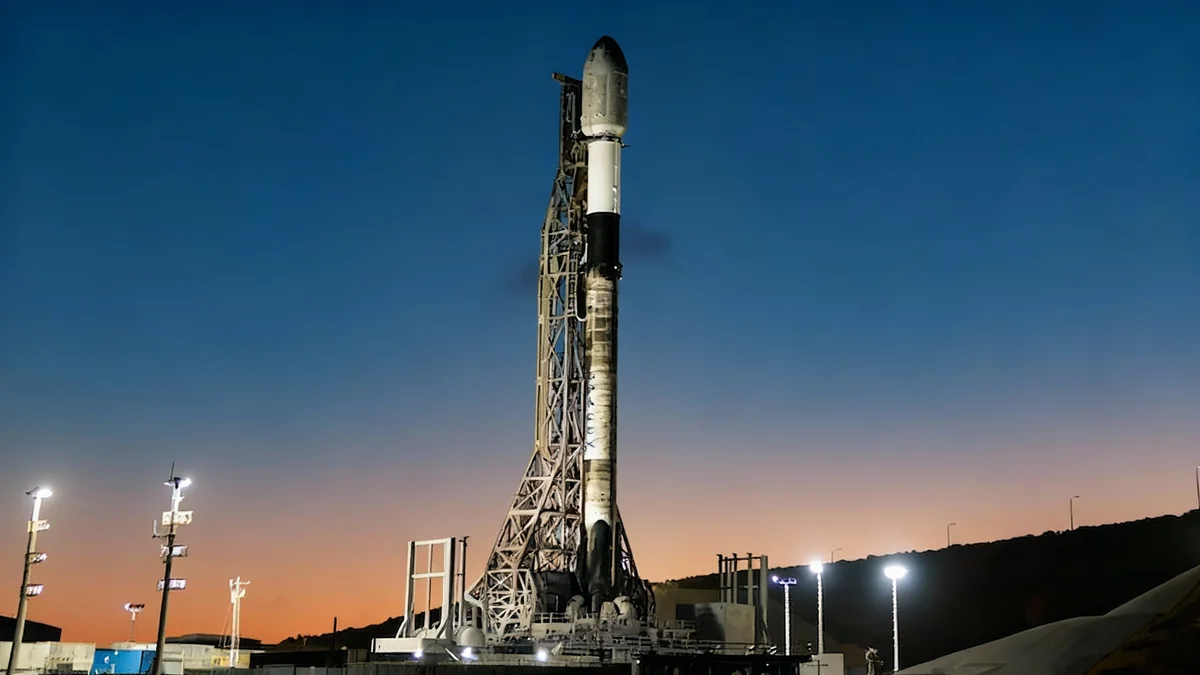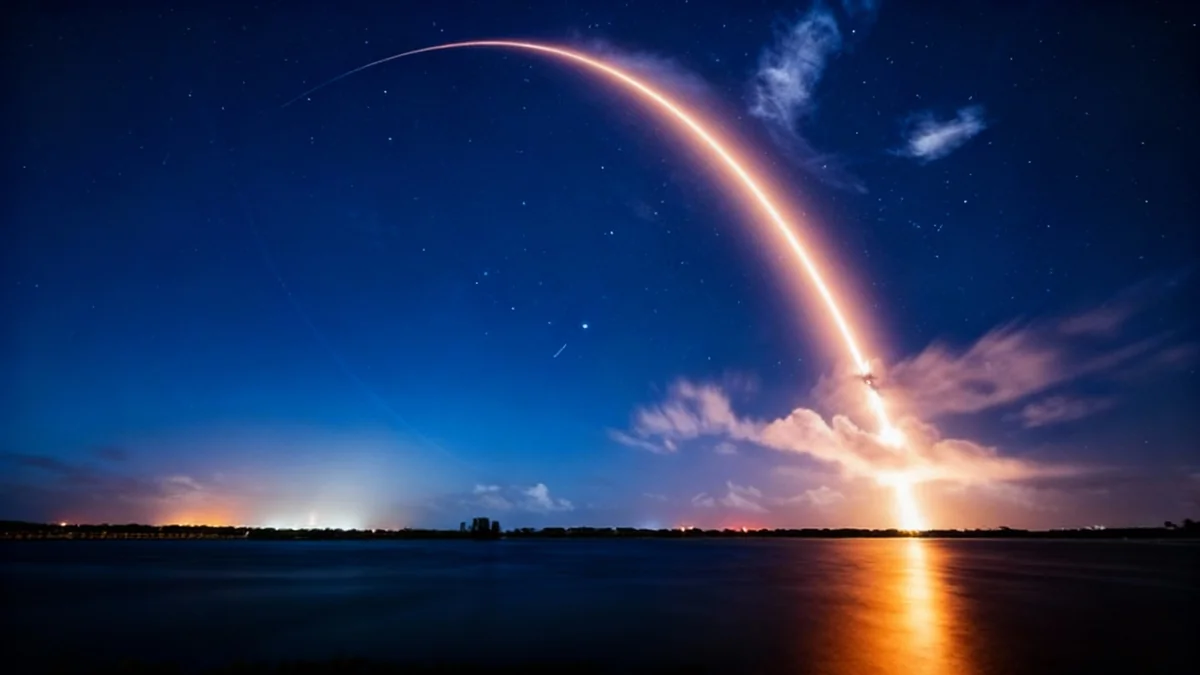SpaceX is scheduled to launch a Falcon 9 rocket from California this Saturday, a mission that will set a new record for the company's launch activity. The flight, designated Starlink 11-12, will be the 135th orbital launch for SpaceX in 2025, surpassing the total number of launches it conducted in all of 2024.
The mission aims to deploy another 28 satellites for the Starlink broadband internet constellation. Liftoff is planned from Space Launch Complex 4 East at Vandenberg Space Force Base at 7:20 a.m. Pacific Daylight Time.
Key Takeaways
- SpaceX's Saturday mission will be its 135th launch of 2025, establishing a new annual record for the company.
- The flight will add 28 satellites to the Starlink network, which currently has over 8,700 active units in orbit.
- The Falcon 9 first-stage booster, B1081, will be flying for a remarkable 19th time.
- A successful landing on the drone ship 'Of Course I Still Love You' would mark the 523rd booster recovery for SpaceX.
A New Benchmark in Spaceflight
This weekend's launch represents a significant milestone in the pace of modern space operations. By conducting 135 orbital missions before the end of October, SpaceX has demonstrated an unprecedented launch cadence, eclipsing its own record set just one year prior. This rapid deployment capability is central to the company's strategy, particularly for building out its massive Starlink satellite constellation.
The consistent rate of launches has been enabled by the reusability of the Falcon 9 rocket system. By recovering and reflying first-stage boosters, the company has dramatically reduced the turnaround time between missions and lowered the overall cost of accessing space.
The Evolution of SpaceX Launch Vehicles
While the Falcon 9 is the company's primary launch vehicle, SpaceX also operates the Falcon Heavy for larger payloads. The Falcon Heavy, which first flew in 2018, utilizes three Falcon 9 cores strapped together, allowing it to lift significantly heavier cargo into orbit. The company also continues to develop its next-generation Starship vehicle, designed for missions to the Moon, Mars, and beyond.
The Mission Profile
The Starlink 11-12 mission will follow a familiar flight path for launches from the West Coast. After lifting off from Vandenberg, the Falcon 9 rocket will ascend over the Pacific Ocean. The first stage is expected to separate from the second stage approximately two and a half minutes into the flight.
A Veteran Booster Takes Flight
The first-stage booster assigned to this mission, identified by its tail number B1081, is one of the most experienced in SpaceX's fleet. This will be its 19th launch and landing attempt. Previously, this specific booster has supported a variety of high-profile missions, including several for NASA.
Its flight history includes launching the Crew-7 mission carrying astronauts to the International Space Station, as well as the PACE and TRACERS science missions. Its continued use highlights the reliability and durability of the reusable rocket design.
The ability to reuse the first stage of the Falcon 9 rocket is a key element in reducing the cost of space access and increasing launch frequency.
Drone Ship Landing
Following stage separation, booster B1081 will perform a series of engine burns to reorient itself for a controlled descent back through Earth's atmosphere. It will target an autonomous landing on the drone ship, ‘Of Course I Still Love You’, positioned in the Pacific Ocean.
If the landing is successful, it will be the 160th time a booster has landed on this particular vessel and the 523rd overall booster recovery for SpaceX. These landings have become a routine, yet critical, part of every mission.
Expanding the Starlink Network
The primary goal of this launch is to continue the expansion of the Starlink satellite internet service. The 28 satellites on board will join a vast network already in low Earth orbit. Prior to this launch, the constellation consisted of more than 8,700 active satellites, according to data from astronomer Jonathan McDowell, who closely tracks orbital objects.
Just last week, SpaceX launched its 10,000th Starlink satellite since the project began, though not all remain active in orbit. The company deorbits older satellites to make way for newer, more capable versions.
The Starlink network provides high-speed, low-latency internet to users around the globe, including in remote and underserved areas. The service is now available on all seven continents and is used for residential, commercial, and mobile applications.
A Legacy of Cargo and Crew
Beyond its own Starlink program, SpaceX remains a crucial partner for NASA and other commercial entities. The company has been flying cargo to the International Space Station (ISS) for over a decade using its Dragon capsule.
For example, a mission in November 2023 delivered over 6,500 pounds of supplies, including scientific experiments like water filters and a laser communications system. Earlier missions, like one in 2016, delivered unique payloads such as an experimental inflatable room designed to test future deep-space habitat technologies.
The company's proven track record with both its Falcon 9 and Dragon spacecraft has established it as a leader in the modern space industry, a position further solidified by the record-breaking launch pace seen in 2025.





